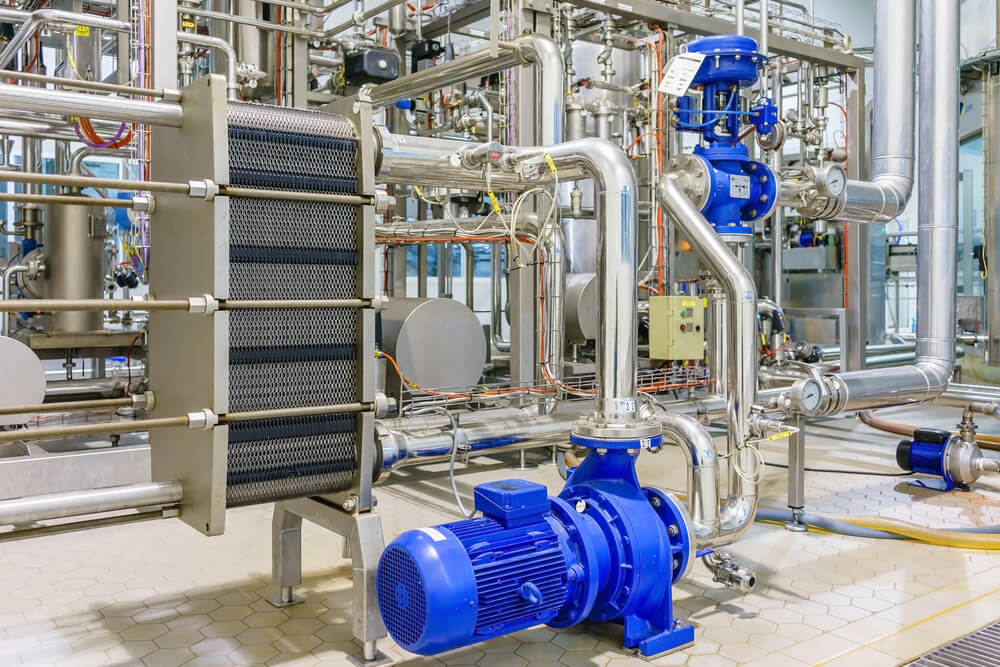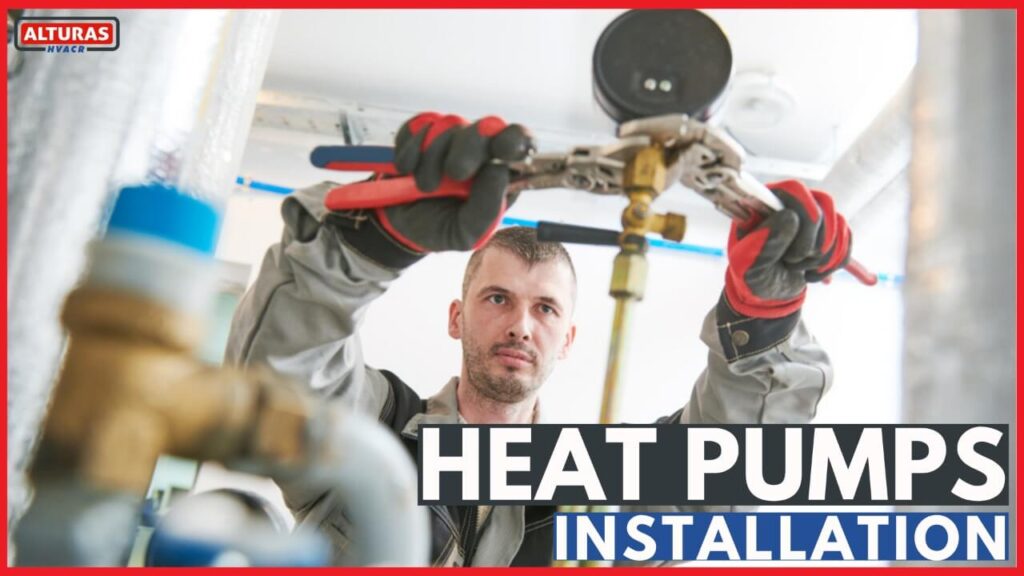The term ‘Heat Pumps’ actually refers to a group of technologies that can incorporate the HVAC (heating, ventilation, and air conditioning) devices which always provide heat energy which is then transferred from a source of heat or warmth to a destination that is called as a heat sink, effectively ‘pumping ‘warmth from one place to another.
Heat Pumps Basics
Basically, heat pumps would move thermal energy in the opposite direction of natural heat flow just by absorbing heat from a cold space and releasing it to a warmer space. Their most important purpose is to space heating through radiators, underfloor heating systems, or warm air convectors, they can also be used in order to heat water for use in your home or business. Most heating pumps have excellent climate control capabilities and can be used to provide space cooling by simply reversing the process of space heating. In so many different ways, a heat pump is functioning as the same as conventional air conditioners. Well, it is basically an air conditioner that can reverse itself.
For example, an air source heat pump will tend to extract heat from the air outside your land in the same way a fridge would extract heat from its inside and a ground source heat pump acts somehow same, but in actual it would function simply by taking the residual warmth from the soil or a water body outside your property and then it will move it inside.
Since we know that the air source heat pumps become less efficient the cooler it is outside, they still can be capable of operating adequately in temperatures of -15 C, which is 99.99% of the year. They do have some fantastic energy efficiency ratings and although they do have some impact on the environment because they require electricity in order to run, they do not burn fuels directly, so in most cases, they provide a fantastic way of lowering your carbon footprint.
How does a Heat Pump Work?

Heat pumps work in two modes that are cooling mode as well as heating mode, below are the details for both of these modes
Cooling Mode
One of the most important things that you need to understand about heat pumps is their function and the process in which they transfer heat. The heat energy naturally moves towards those areas that have lower temperatures as well as less pressure. Heat pumps usually depend on this physical property in order to put heat in contact with cooler, lower pressure environments so that the heat can easily transfer.
This is how a heat pump works in cooling mode.
A heat pump in cooling mode.
STEP 1
First of all the liquid refrigerant is basically pumped via an expansion device that is there at the indoor coil, which is basically functioning as an evaporator. All the air from inside your entire house is blown across these coils, where heat energy is absorbed by the refrigerant. As a result, the cool air is blown throughout your home’s ducts. This process of absorbing the heat energy has caused the liquid refrigerant to get heat up and evaporate into another form that is the gas form.
STEP 2
After that these gaseous refrigerants will then pass through a compressor, which actually pressurizes the gas. This process of pressurizing the gas would cause it to heat up it is a physical property of compressed gases. This hot, pressurized refrigerant will then move through the system to the coil to the outdoor unit.
STEP 3
A fan that is there in the outdoor unit would move outside air across the coils, which is serving as condenser coils basically in the cooling mode. Just because of the reason that the air outside your entire home is relatively cooler than the hot compressed gas refrigerant that is there in the coil, the heat is transferred from the refrigerant to the outside air. During this whole process, the refrigerant condenses back to a liquid state as it will cool itself. This warm liquid refrigerant will be pumped through the system to the expansion valve at the indoor units.
STEP 4
The expansion valve would help in reducing the pressure of the warm liquid refrigerant, which will cool it down significantly. At this stage, the refrigerant is in a cool, liquid state and is also ready to be pumped back to the evaporator coil in the indoor unit to start this cycle again.
How a heat pump works in heating mode
Well basically, a heat pump that is there in the heating mode would operate somewhat the same as the cooling mode, other than the fact that the flow of refrigerant in this mode is reversed by the aptly named reversing valve. The flow reverse would mean that the heating source becomes the outside air, even when the outdoor temperature is low, as well as the heat energy, is released inside your home. The coil that is outside now has the function of an evaporator, and the indoor coil now has the role of the condenser because of the change in roles in this mode.
The physics of this process is the same but the heat energy is absorbed in the outdoor unit just by the cool liquid refrigerant, which would turn it into cold gas. All the pressure is then applied to the cold gas which would turn it into a hot gas. This hot gas is then cooled in the indoor unit just by passing air, heating the air, and condensing the gas to warm liquid. The warm liquid is then relieved of pressure as it would enter the outdoor unit which will then turn it to cool liquid and renew the cycle.
As a whole, a heat pump is flexible and efficient in both cooling and heating system. All the credit goes to a reversing valve, the heat pump can change the flow of refrigerant and either heat or cool a home. Air is blown over an evaporator coil, which would be transferring the heat energy from the air to the refrigerant. That heat energy is distributed in the refrigerant to a condenser coil, where it is released as a fan blows air across the coil. Through this process, heat would be pumped from one place to another.
Heat Pump Installation Requirements

The first and foremost important thing for heat pump installation is to find an appropriate place to place the main unit. This would ideally need to be in a sheltered and safe place where it will not be open to any sort of heavy rains and winds or be interfered with by anyone who is passing by.
You would also need a reasonable clearance around the unit which must be about 200mm for some wall-mounted units, more for bigger, floor systems.
The whole installation would involve an outdoor section as well as an indoor section, so you will have to make sure that there is sufficient space inside as well. After both of these units are fitted onto their mountings, refrigerant and drain hose pipes are properly connected and then insulated, both inside and out. This whole system can then be connected to your indoor heating systems such as the boiler or radiators.
Heat Pumps Installation Costs
Here are some of the factors you will have to consider when reviewing the pricing of heat pump units:
Size:
Usually, the capacity of a heat pump is measured in tons, and the typical units on the market would fall between 2 and 5 tons. So finding the perfect size for your home is really very important. Going for the one that is very small may require it to run continuously which can obviously raise your energy bill and wear out the system. On the other side higher tons can come at pricier up-front costs.
Brand:
A lot of these brands offer a range of units at many different prices starting from cheaper, lower-quality to expensive, high-quality systems. You will have to shop around on the market and read all the reviews for each brand to make sure that you make the best choice, rather than choosing solely on price.
Installation:
Hiring an HVAC contractor to help you with your heat pump installation is really very. Labor costs can differ which would depend on the heat pump type. For instance, geothermal units would require more work in order to install because of the reason that they need to be buried under at least 4 feet of the ground. In fact, ductless mini-split heat pumps can cost as little as $500 for a quick and easy installation.
Heating Seasonal Performance Ratio (HSPF):
This rating is a metric that is used to measure the efficiency of a heat pump but particularly for how it heats a home. Typical HSPF ratings on the market fall between 8.2 and 13, with the higher number being the most efficient.

